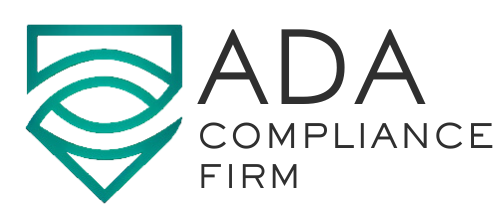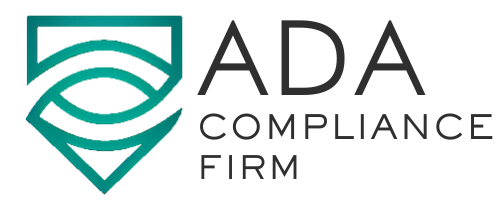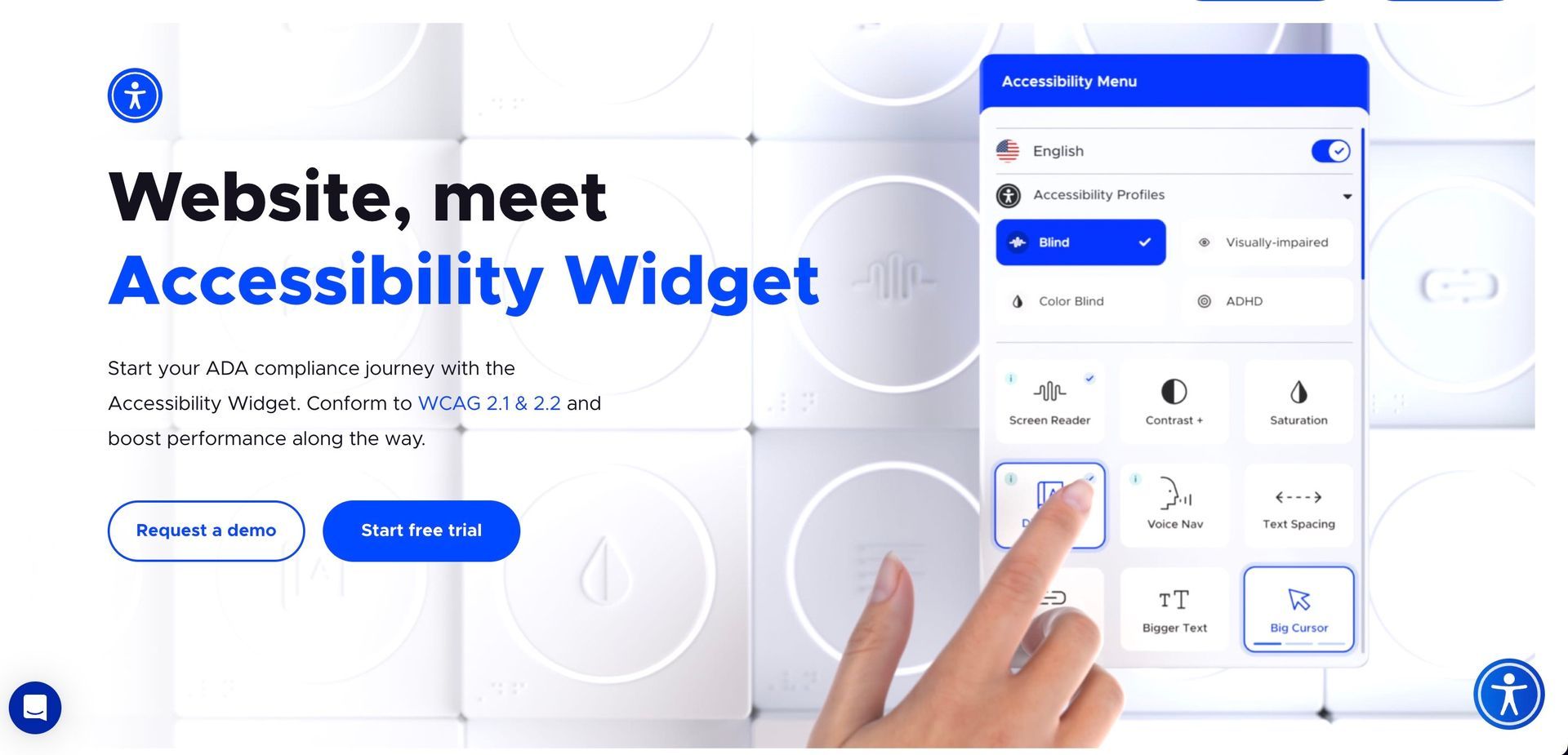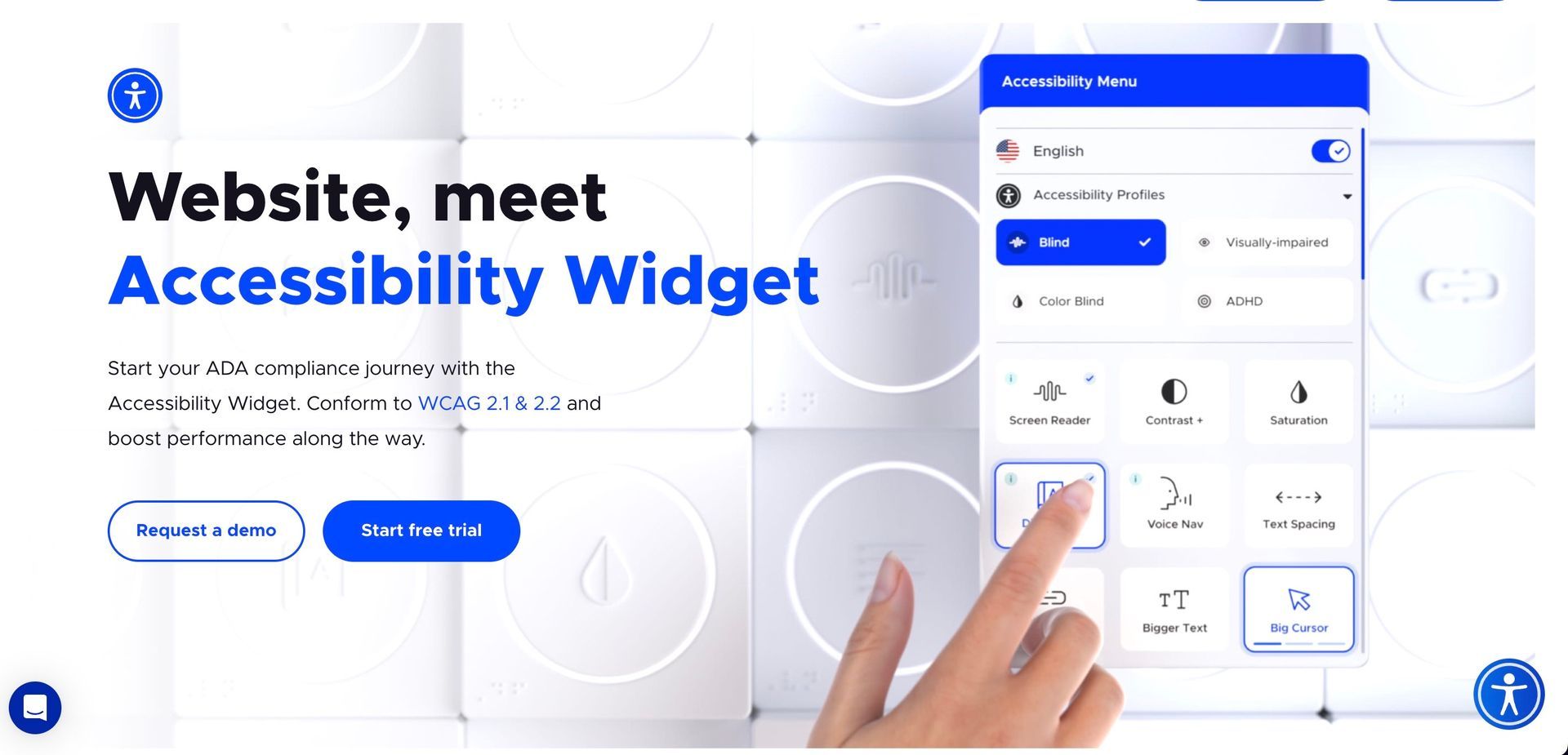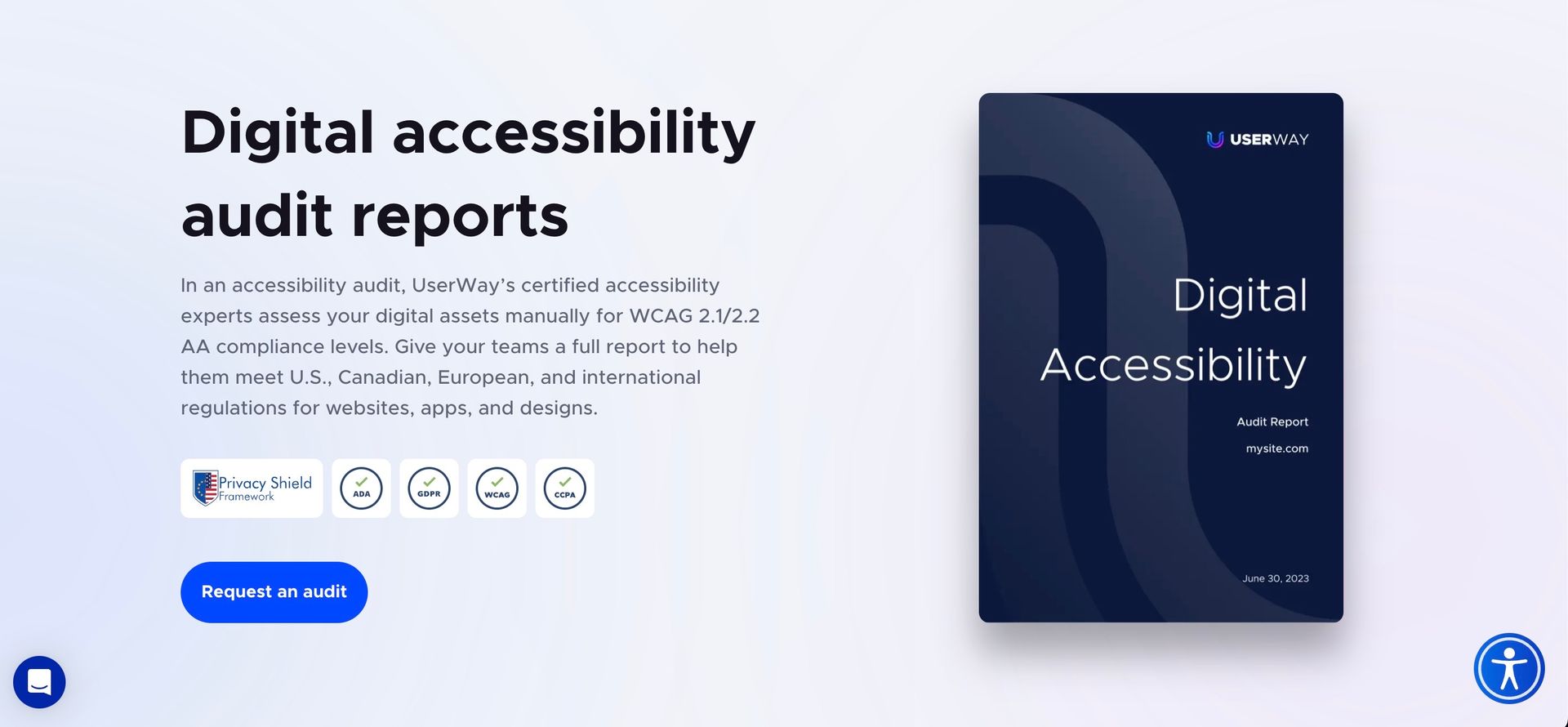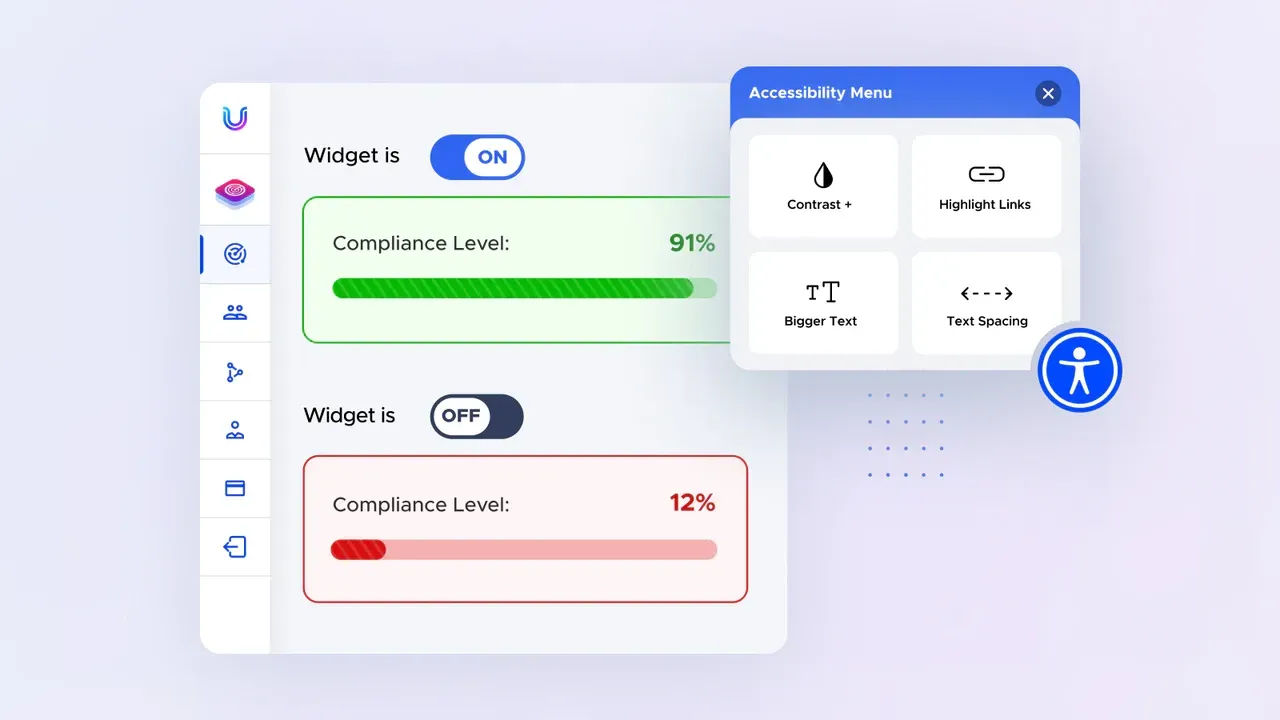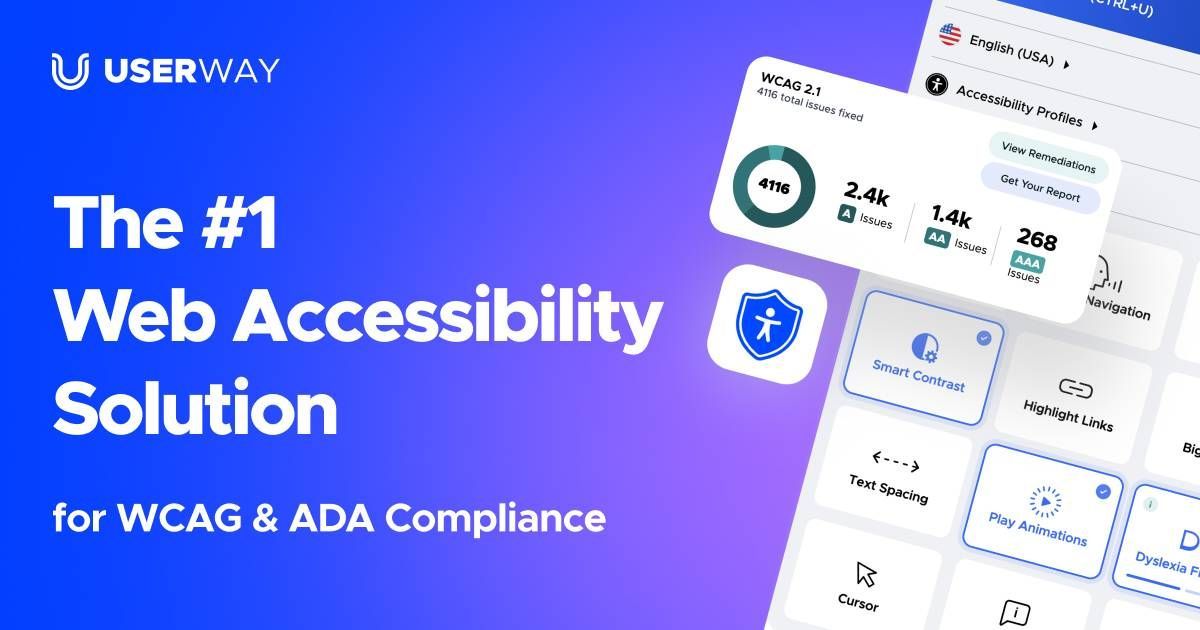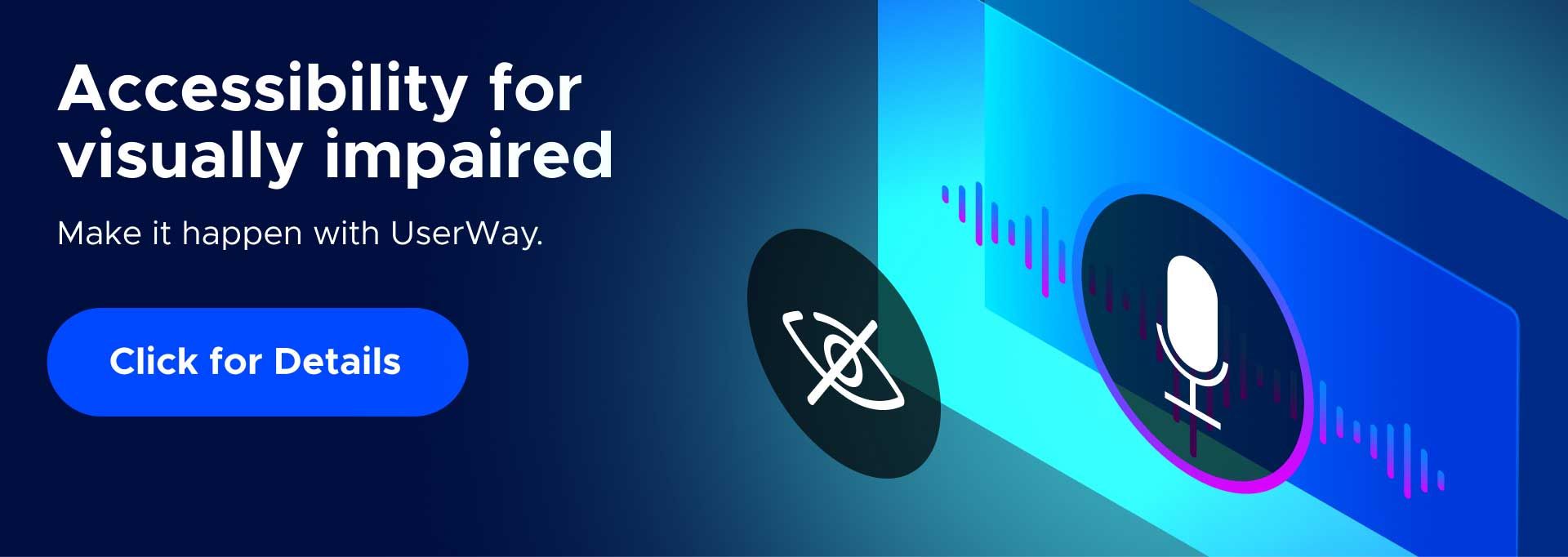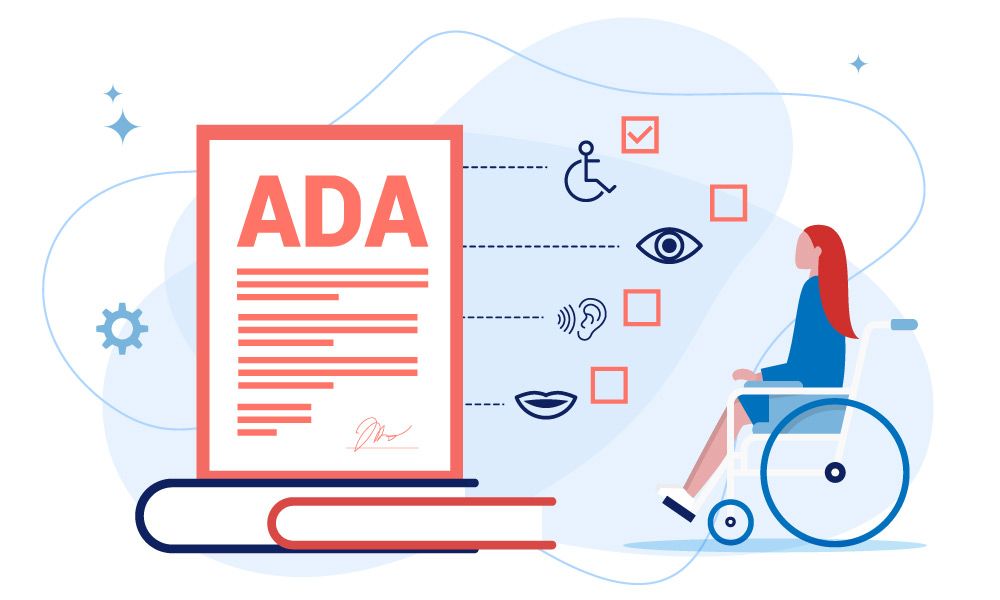What Websites are Exempt from ADA Compliance?

Section 1: Overview of ADA Website Compliance
There are a few business models that could be exempt from ADA compliance. In the realm of digital accessibility, ADA Website Compliance stands as a critical benchmark. To understand the exemptions, it's essential first to grasp what ADA compliance entails for websites.
In the realm of digital accessibility, ADA Website Compliance stands as a critical benchmark. To understand the exemptions, it's essential first to grasp what ADA compliance entails for websites. The Americans with Disabilities Act (ADA), while initially not explicitly addressing digital spaces, has evolved to include websites as part of the public entities and businesses it seeks to make accessible to all, including individuals with disabilities.
1.1 What Does ADA Compliance Mean for Websites?
ADA compliance for websites means ensuring that your digital content and web experience are accessible to everyone, regardless of their abilities. This includes people with a range of disabilities - visual, auditory, physical, speech, cognitive, and neurological disabilities. Compliance involves designing your website so that it can be navigated and understood by people who might use assistive technologies, such as screen readers or voice recognition software.
1.2 Key Requirements for Web Accessibility
The Web Content Accessibility Guidelines (WCAG) are often referenced as a standard for ADA compliance. Although the ADA does not explicitly mention WCAG, these guidelines serve as a de facto standard. They outline principles to make a website perceivable, operable, understandable, and robust:
- Perceivable: Information and user interface components must be presentable to users in ways they can perceive. This means providing text alternatives for non-text content, creating content that can be presented in different ways, and making it easier for users to see and hear content.
- Operable: User interface components and navigation must be operable. This involves making all functionality available from a keyboard, giving users enough time to read and use content, and not designing content in a way that is known to cause seizures.
- Understandable: Information and the operation of the user interface must be understandable. This includes making text readable and understandable and ensuring that web pages appear and operate in predictable ways.
- Robust: Content must be robust enough that it can be interpreted by a wide variety of user agents, including assistive technologies. This means maximizing compatibility with current and future user tools.
1.3 The Evolving Nature of ADA Compliance
ADA website compliance is not a one-time task but an ongoing process. As technology and standards evolve, so too must website design and functionality. Regular audits, updates, and modifications are necessary to maintain compliance, especially as new guidelines and interpretations of the ADA emerge.
In summary, ADA website compliance is about ensuring that a website is accessible to all users, including those with disabilities. It involves adhering to established web accessibility guidelines and being responsive to the changing technological landscape. With this foundation, we can better understand the nuances of who is required to comply and the specific exemptions that may apply.
Section 2: The Legal Framework
Understanding the legal framework of the Americans with Disabilities Act (ADA) is crucial in comprehending the extent and scope of ADA website compliance. Initially enacted in 1990, the ADA was a landmark civil rights law aimed at eliminating discrimination against individuals with disabilities. Over the years, its application has expanded beyond physical spaces to include digital accessibility, particularly websites.
2.1 The Evolution of the ADA in the Digital Age
Initially, the ADA did not explicitly mention websites. However, as the internet became integral to public life, the interpretation of the ADA began to evolve. Title III of the ADA, which prohibits discrimination in "places of public accommodation," has been increasingly interpreted by courts and the Department of Justice (DOJ) to include websites. This interpretation means that websites, just like physical stores and public spaces, must be accessible to people with disabilities.
2.2 Key Legal Cases Highlighting ADA Website Compliance
Several legal cases in recent years have underscored the importance of ADA compliance for websites:
- Gil v. Winn-Dixie Stores, Inc. (2017): This was a landmark case where a federal court in Florida ruled that Winn-Dixie’s website was required to be accessible under the ADA because the site was heavily integrated with the store's physical locations.
- Robles v. Domino's Pizza LLC (2019): The U.S. Court of Appeals for the Ninth Circuit held that Domino’s Pizza must make its website and mobile app accessible to blind users. The court affirmed that the ADA applies to websites and mobile apps of businesses with physical locations.
- National Federation of the Blind v. Scribd Inc. (2015): This case extended ADA compliance to certain businesses operating exclusively online, without a physical storefront. The court ruled that Scribd, an e-book and audiobook subscription service, was subject to ADA standards.
These cases illustrate the trend in interpreting the ADA as applicable to websites, particularly for businesses with physical locations and, in some instances, for purely online enterprises as well.
2.3 Implications of Legal Precedents
The implications of these legal precedents are profound for website owners. They suggest a legal obligation to ensure web accessibility, regardless of whether a business has a physical location. This evolving legal landscape indicates a clear trend towards broadening the scope of ADA compliance to include digital accessibility, highlighting the need for all website owners to understand and adhere to ADA guidelines.
In conclusion, the legal framework of the ADA, as it applies to websites, is a dynamic and evolving aspect of law. Recent court decisions have reinforced the importance of ADA compliance in the digital realm, setting a precedent that necessitates vigilance and proactive measures from website owners and developers to ensure inclusivity and accessibility for all users.
Section 3: Who Needs to Comply?
Determining which websites need to adhere to ADA compliance is a critical aspect of navigating the digital accessibility landscape. As the legal interpretation of the ADA continues to evolve, particularly in the context of online accessibility, it becomes crucial for website owners and developers to understand their obligations under the law.
3.1 Businesses Covered Under ADA Title III
Title III of the ADA primarily targets businesses that fall into the category of "public accommodations." These include a wide range of entities such as hotels, banks, hospitals, retail stores, and educational institutions.
Traditionally, these are physical locations accessible to the public. However, in the context of ADA website compliance, this has been extended to include the online services and websites of such businesses. If a business operates a physical location that is considered a public accommodation, its website must be accessible to individuals with disabilities, offering them the same level of access as the physical location.
3.2 Online-Only Businesses
The application of ADA standards to online-only businesses, which do not have a physical presence, has been a gray area. However, recent court rulings suggest a trend towards expecting these businesses to comply as well. For instance, the National Federation of the Blind v. Scribd Inc. case established that certain online-only businesses are also subject to ADA compliance. Thus, e-commerce sites, online educational platforms, and other digital services should consider ADA compliance to avoid potential legal risks.
3.3 Government Entities and Nonprofits
Title II of the ADA applies to state and local government entities, requiring them to make their programs, services, and activities accessible to individuals with disabilities. This includes websites and other digital platforms operated by government agencies. Similarly, nonprofit organizations, especially those that serve the public or receive government funding, are expected to ensure their websites are accessible under the ADA.
3.4 Small Businesses and Exemptions
Small businesses often question their obligations regarding ADA website compliance. The ADA does provide some exemptions for small businesses, particularly those that may find compliance to cause an undue burden due to their size, resources, or nature of the business. However, these exemptions are not clearly defined when it comes to website accessibility. Small businesses should seek legal counsel to understand their specific obligations and assess whether the undue burden exemption may apply to them.
In summary, ADA website compliance is a consideration for a wide range of entities - from large corporations with a physical presence to online-only businesses, government agencies, and nonprofits. While there are nuances and potential exemptions, especially for small businesses, the trend in legal interpretation suggests a broad application of ADA standards to digital platforms. Ensuring web accessibility is not just about legal compliance; it's also a commitment to inclusivity and providing equal access to all users.
Section 4: Exemptions from ADA Website Compliance
While the ADA casts a wide net in terms of requiring websites to be accessible, there are specific scenarios and types of websites that might be exempt from these stringent requirements. Understanding these exemptions is crucial for website owners and developers to determine their legal obligations and the extent to which they need to invest in making their websites ADA compliant.
4.1 Small Business Considerations
The most commonly discussed exemption revolves around small businesses. The ADA does provide some leeway for small businesses, particularly when compliance would cause an "undue burden." This is typically interpreted in terms of significant difficulty or expense relative to the size, resources, and nature of the business. However, this exemption is not automatically granted; it must be justified on a case-by-case basis. Small businesses should carefully evaluate their situation and may seek legal advice to determine if this exemption applies to them.
4.2 Religious Organizations and Private Clubs
Religious entities and private clubs, which are otherwise exempt from certain provisions of the ADA, may also find this exemption extends to their websites. However, this exemption is narrowly tailored. If the organization conducts activities that are open to the general public or if the website is used for such public activities, they may still need to comply with ADA website accessibility standards.
4.3 Personal Websites and Blogs
Personal websites, blogs, or portfolios that are not commercially operated or linked to a business may be exempt from ADA compliance. These sites, especially when they do not generate revenue or significantly impact commerce, are often considered outside the scope of ADA regulations. However, if a personal site starts to engage in commercial activities, the need for compliance could change.
4.4 Content from Third-Party Providers
Websites often contain third-party content or plug-ins. The responsibility for ADA compliance of such third-party content can be complex. Generally, if a website integrates third-party services or content that it does not control, the website owner may not be responsible for the compliance of that specific content. However, this does not absolve them from ensuring that the rest of their website is ADA compliant.
4.5 Transitory Content
Content that is transitory in nature, such as live chats, real-time updates, or streaming content, might have certain exemptions due to the challenges in making such content fully accessible. However, website owners should strive to provide accessible alternatives or options wherever possible.
Section 5: Risks of Non-Compliance
Navigating the complexities of ADA website compliance can be challenging for many businesses, but understanding the risks associated with non-compliance is crucial. These risks extend beyond legal ramifications, encompassing financial, reputational, and operational aspects that can significantly impact a business.
5.1 Legal and Financial Consequences
The most immediate risk of non-compliance with ADA website standards is the potential for legal action. Lawsuits related to ADA website compliance have been on the rise, with plaintiffs arguing that inaccessible websites violate their civil rights.
Legal cases can lead to:
- Financial Penalties: Businesses found non-compliant may face fines and legal costs. While these fines vary, they can be substantial, especially for small businesses.
- Mandatory Compliance Orders: Courts may order businesses to make their websites compliant, which can involve additional expenses for redesign and development.
5.2 Reputational Damage
An often-overlooked consequence of non-compliance is the potential damage to a business’s reputation. In today's socially conscious market, inclusivity and accessibility are increasingly important to consumers. Non-compliance can lead to negative publicity, impacting customer trust and loyalty. This reputational damage can have long-term effects on customer relationships and brand perception.
5.3 Lost Business Opportunities
Inaccessible websites can lead to a loss of potential customers. Individuals with disabilities represent a significant market segment. By not having an ADA-compliant website, businesses inadvertently exclude this group, resulting in lost revenue opportunities. Furthermore, an accessible website often provides a better user experience for all visitors, which can translate into increased engagement and sales.
5.4 Operational Disruptions
Addressing non-compliance issues can be a disruptive process. It often requires significant changes to the website’s design and functionality, which can be time-consuming and resource-intensive. This disruption can divert attention and resources from other critical business operations.
5.5 Increased Scrutiny
Businesses that face legal action for non-compliance might find themselves under increased scrutiny from advocacy groups and regulatory agencies. This heightened attention can lead to further investigations and
ongoing compliance requirements, placing additional strain on the business.
Section 6: Best Practices for Ensuring Compliance
Ensuring compliance with ADA website standards is more than a legal obligation; it's a commitment to inclusivity and providing a seamless digital experience for all users. Adopting the following best practices can help businesses achieve and maintain compliance effectively.
6.1 Conduct Regular Accessibility Audits
The cornerstone of maintaining ADA compliance is the regular assessment of your website. Periodic audits help identify potential accessibility barriers. Employ a combination of automated tools and manual testing, ideally by experts in web accessibility or by users with disabilities, to ensure a comprehensive evaluation. These audits should encompass all website elements, including navigation menus, content, forms, and interactive features.
6.2 Adhere to WCAG Guidelines
Following the Web Content Accessibility Guidelines (WCAG) is essential for ADA compliance. Strive for the highest level of compliance possible (WCAG 2.1 AA or AAA). This includes providing text alternatives for non-text content, ensuring website functionalities are accessible via keyboard, using sufficient color contrast, and offering captions for audio and video content. Regular updates to WCAG should be monitored and implemented.
6.3 Embrace Inclusive Web Design
Incorporate accessibility considerations right from the start of your web design process. Engaging with designers and developers who are knowledgeable in accessibility ensures that your website is built with inclusivity in mind from the ground up. This proactive approach is often more cost-effective and efficient compared to retrofitting accessibility features into an existing design.
6.4 Educate Your Team
Awareness and continuous learning about web accessibility are vital. Educate your team, including developers, designers, and content creators, about the importance of ADA compliance and the latest accessibility practices. Regular training sessions can help keep everyone up-to-date with the evolving standards and techniques.
6.5 Value User Feedback
Create channels for users to report accessibility issues they encounter on your website. Actively seeking and addressing feedback from users, especially those with disabilities, can provide invaluable insights into the practical aspects of your website's accessibility. User testing with individuals who have disabilities can also offer direct, actionable feedback.
6.6 Utilize Accessibility Tools and Resources
Leverage the myriad of tools and resources available for testing and improving web accessibility. These tools can help identify areas for improvement, but they shouldn’t be the sole method of assessment. Remember, automated tools might not detect all types of accessibility issues.
6.7 Document Your Compliance Efforts
Maintain detailed records of your actions to make and keep your website ADA compliant. Documentation should include the history of accessibility audits, specific changes made to improve accessibility, and responses to any user feedback. This documentation can be invaluable in demonstrating your commitment to accessibility in any legal or regulatory context.
Conclusion
Implementing these best practices not only aligns your website with ADA compliance but also demonstrates your dedication to creating an inclusive digital environment. An accessible website extends your reach, opens up new markets, and reflects positively on your brand’s values. In today’s world, where digital presence is crucial, ensuring your website is accessible to all is not just a legal necessity; it's a moral and business imperative.
Businesses Get Compliant
As a business owner, understanding and implementing ADA website compliance is not just a legal requirement; it's a crucial step in ensuring your digital space is accessible and inclusive for all users. The journey to achieving and maintaining compliance can be complex, but you don't have to navigate it alone.
We highly recommend partnering with UserWay, a leading provider in web accessibility solutions. UserWay offers an array of tools and services designed to make your website compliant with ADA standards, making the process straightforward and efficient. Their expertise in web accessibility can help safeguard your website against legal risks, improve user experience for all visitors, and demonstrate your commitment to inclusivity.
By signing up with UserWay through our affiliate link, you'll be taking a proactive step towards ensuring your website is not only legally compliant but also accessible to a wider audience. Don't wait until it's too late; take action today to make your website a welcoming place for everyone.
Sign up with UserWay and embark on your journey towards ADA compliance.
Join our newsletter
Recent Blog Posts
